THERE’S NOTHING LIKE WAKENING to the smell of fish—and I don’t mean kippers! We are in Manta, the largest port in Ecuador, also the Tuna Capital of South America. There is no special pier for cruise ships so we are moored among the commercial fishing fleet and cranes lifting nets full of tuna from at least a dozen boats perfume the air with Eau de Tuna.
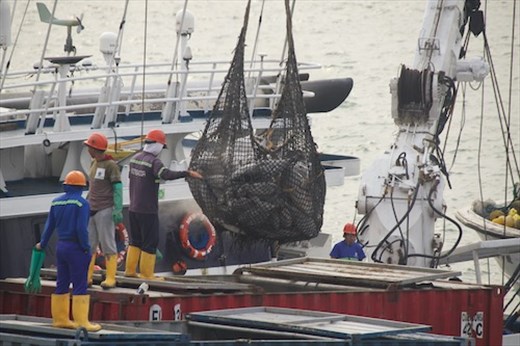
Manta, Tuna Capital of Ecuador
We are not here for tuna but for sombreros. Hats. Panama hats. We first got the scoop about Panama hats on a visit to the cute town of Cuenca fifteen years ago. In case you haven’t heard, Ecuador—not Panama—is the home of the “Panama” hat, known locally as Montecristi for the town in which they are made.

The Real Deal

Two Generations, Bryan and his Mom
When we read that shore excursions to Montecristi to see how the hats are made were $100 per person, John went online and contacted Bryan at Montecuador Hats and arranged for a visit of our own. Bryan’s Mom runs the shop, his brother operates the blocking machine and he handles sales and marketing. Just up Calle 9 de Julio his uncle runs Modesto Hats.

Lucindia is part of a dying breed
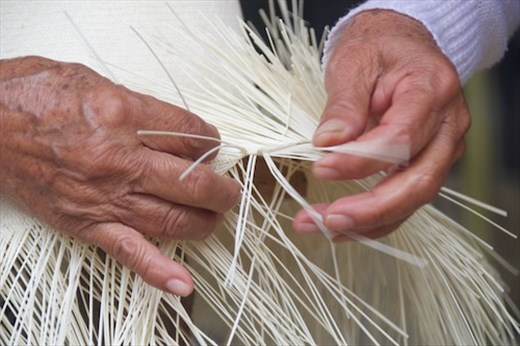
Hands of a Master

Blocking shapes and styles the Montecristi
Lucindia is one of a dying breed. She has been splayed out over a hat form for forty years, her sturdy fingers weaving palm fibers into what will eventually become an original Montecristi. Her finished work is placed in the blocking machine where heat, moisture, pressure produce each of the six sizes and the three styles of Montecuador makes. The cheapest hats take a couple of days to form while the best, those with the tightest weave, take weeks and cost up to $400.
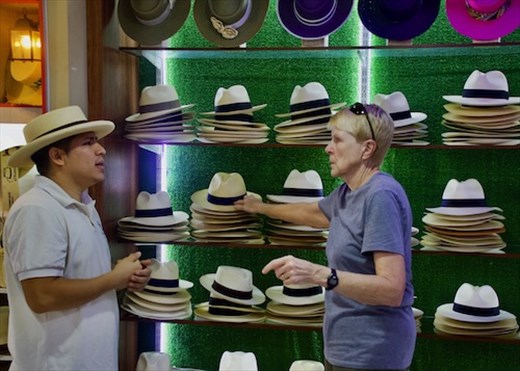
Bryan explains the different sytles of Montecuador's hats
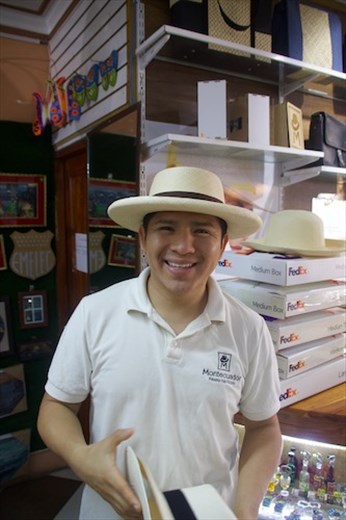
Some guys look good in hats
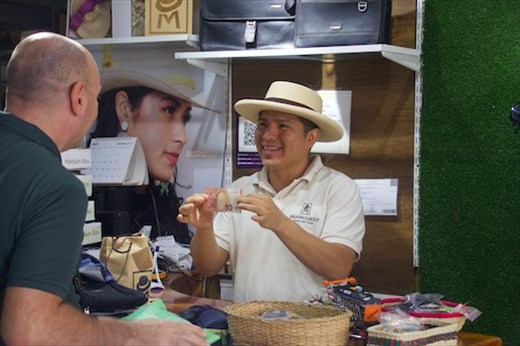
Another Satisfied Customer with his Montecristi
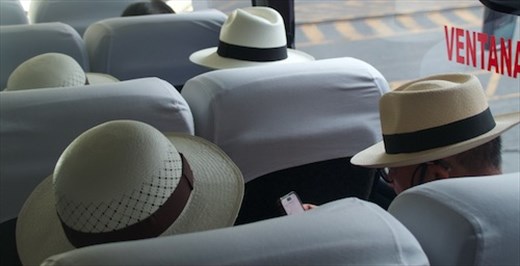
Fellow passengers with their new Montecristi hats
We didn’t purchase anything from Bryan. While I admire those ladies and gents who look good in a Montecristi, I am not one. We were pleased that several others from Oosterdam returned aboard with new hat.